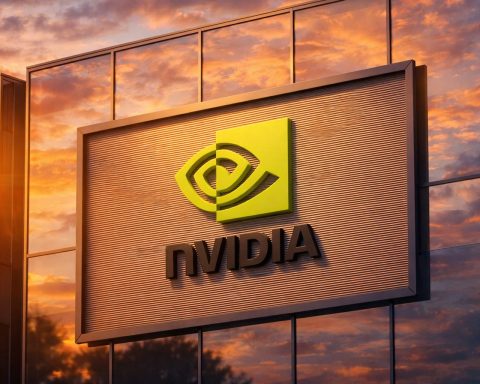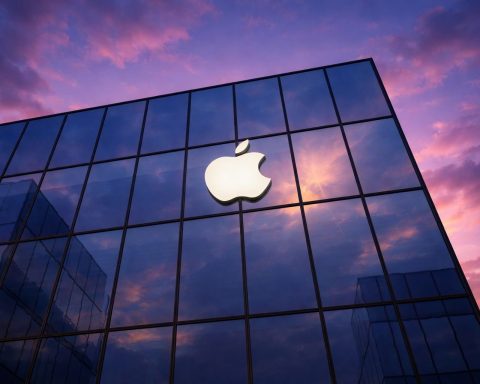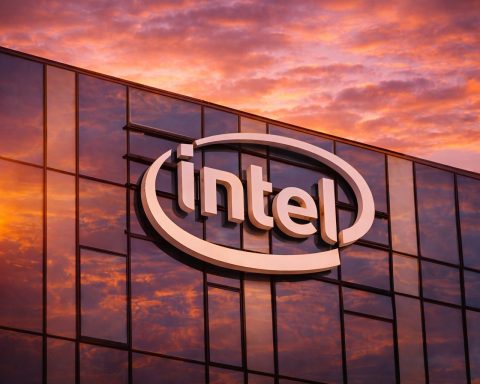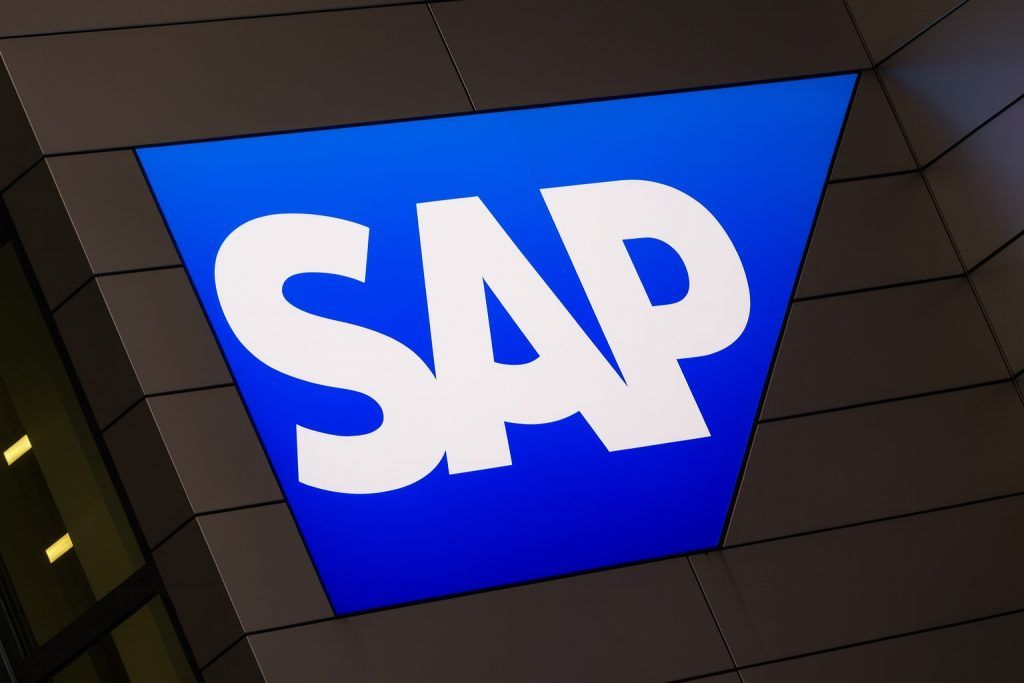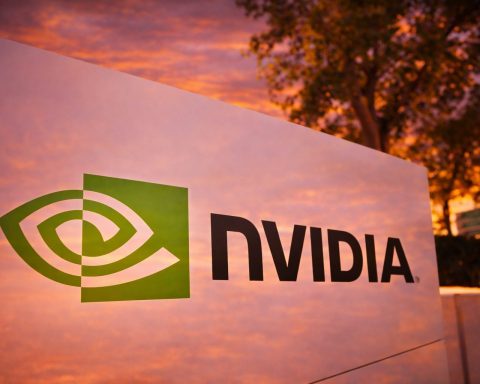- Q1 FY2026 blowout: Lam Research reported fiscal Q1 (ended Sept. 28, 2025) revenue $5.32B, EPS $1.26 (non-GAAP), beating consensus ($5.22B, $1.21) [1] [2]. Net income was $1.57B, or $1.24/share GAAP [3].
- Upbeat outlook: Management guided Q2 revenue ~$5.20B±$300M and EPS ≈$1.15±0.10, well above Street forecasts [4] [5]. Lam’s CEO Tim Archer said “Lam’s innovations are helping our customers address major AI-driven semiconductor manufacturing inflections… we are strongly positioned for continued growth” [6].
- Stock surge: LRCX shares have climbed ~40% since August and ~19% in the past month, near multi-month highs [7] [8]. The October 22 earnings beat sent stock up ~3% in after-hours trading [9].
- Dividends and financials: Lam just raised its quarterly dividend 13% to $0.26 in August [10], reflecting confidence in cash flows. Cash and equivalents reached ~$6.7B at quarter-end [11] [12], and gross margins held ~50%.
- Analyst forecasts: Most analysts are bullish – TipRanks shows “Moderate Buy” consensus (26 analysts, average 12-mo target ~$133 [13]). Major firms have lifted targets (e.g. Cantor $170, Rothschild $150, Stifel $135 [14] [15]). Still, some caution that Lam’s recent 30% run-up may have priced in much of the good news [16] [17]. (HSBC initiated coverage at “Hold” with $127 PT [18].)
- Sector tailwinds & risks: Lam is riding a surge in AI and memory chip spending, benefitting from the booming high-performance computing market [19] [20]. However, geopolitical factors loom: ~43% of revenue comes from China [21], and U.S. export curbs are tightening. Recent Reuters reporting notes Chinese firms bought $38 B of US-made chip tools last year (including Lam’s) – spurring calls for broader export bans [22].
Earnings Beat on Surging Demand
Lam Research (NASDAQ:LRCX) handily beat forecasts for its fiscal Q1, as demand for cutting-edge chipmaking gear remains hot. The Fremont, CA company reported $5.32 billion in revenue and $1.26 EPS (non-GAAP) for Q1, versus analyst estimates of $5.22 B and $1.21 [23] [24]. On a GAAP basis Lam earned $1.57 B ($1.24 per share) [25]. These results, aided by strong year-on-year growth in both logic and memory equipment, “significantly surpassed analyst expectations” and underscore Lam’s role as a bellwether of chipmakers’ AI-driven spending [26] [27].
Management’s guidance was equally positive. Lam forecast Q2 revenue of ~$5.20 B (±$0.3B) and EPS around $1.15 (±$0.10) [28] [29] – well above consensus predictions (~$4.79 B and $1.03 EPS). That upbeat outlook (for quarter ending Dec. 28, 2025) reflects confidence that customers will continue ordering new tools. CEO Tim Archer emphasized that Lam’s R&D innovations are enabling customers to meet major AI chip production needs: “we are executing well in an environment of tremendous opportunity… we are strongly positioned for continued growth” [30].
Investors rewarded the strong results: LRCX stock jumped about 3.3% in after-hours trading on Oct. 22 [31]. With earnings in the bag, traders are now watching Lam’s comments on future orders, especially in China and memory markets.
Stock Chart: Near All-Time Highs
Heading into earnings, LRCX was already trading near multi-month highs. TechStock² noted on Oct. 19 that Lam’s shares (~$141.50) were “up nearly 40% since August” and had climbed ~19% in the past month [32]. Indeed, over the 30 days to Oct. 16, Lam gained roughly 18.8% [33], far outpacing the ~1–2% rise in the broader tech sector and S&P 500. This outperformance reflects optimism about AI spending and Lam’s earnings power. By Oct. 21 Lam was around $145 (again near its 52-week high ≈$149), as analysts fine-tuned models ahead of results.
That rally has left Lam extended by some measures, and not all analysts expect it to keep pace. As TechStock² reported, the consensus among analysts is “bullish overall,” with 22 of 32 rating it a Buy/Strong Buy [34]. Several banks have raised targets: e.g. Cantor Fitzgerald $170, Rothschild $150, Stifel $135 [35] [36]. Yet others are taking profits. HSBC just initiated at Hold ($127 PT) noting Lam’s strong position in a cyclical upcycle [37] [38]. Morgan Stanley, similarly, recently downgraded LRCX (to Underweight) on concerns memory spending and China growth may moderate after 2025 [39] [40]. TipRanks shows a 12-month average target around $133, implying the street’s average is slightly below current levels [41]. In short, analysts say Lam is a high-quality name – it’s “one of the stronger technology and better executing companies” in the semiconductor equipment space [42] – but advise keeping an eye on valuation and timing.
Industry Context: AI Boom vs. Geopolitics
Lam’s momentum is largely driven by secular trends. It is one of the “big three” chip equipment makers, supplying etch and deposition machines critical for making AI accelerators and next-gen memory. In a bullish report, TokenRing AI observed that Lam’s Q1 performance (rev +27.7% YoY, EPS +40% YoY) reflects “the insatiable demand for AI-specific hardware” by data centers and cloud providers [43]. Likewise, Stifel Research highlights booming High-Bandwidth Memory (HBM) and advanced logic foundry projects as key tailwinds [44]. Indeed, Lam has launched new tools (e.g. VECTOR® TEOS 3D for chip packaging) and partnerships (JSR/Inpria photoresist, etc.) aimed at emerging markets like 3D NAND and high-performance AI chips [45] [46]. The company’s latest financials show it keeps a hefty 48–50% gross margin [47] and is generating ~58% ROE [48], testifying to its pricing power.
Nevertheless, some cyclical and geopolitical headwinds lurk. About 43% of Lam’s revenue comes from China [49], historically a huge driver of equipment orders. But U.S. export controls and trade tensions are tightening. A recent U.S. congressional report found Chinese chipmakers bought $38 billion of high-end tools last year (from Applied, Lam, KLA, ASML, Tokyo Electron) [50]. This has prompted bipartisan calls for broader bans on such sales [51]. Lam did not comment on the investigation, but such dynamics could dampen future China demand. Notably, Tokyo Electron (a peer) said China sales have started to decline amid new rules [52]. Any new export curbs could cause short-term volatility in Lam’s stock.
On the industry cycle, much of 2025 has seen strong capital expenditures. Analysts expect overall wafer-fab equipment (WFE) spending to exceed $100 billion in 2025, driven by AI and cloud computing projects [53] [54]. (Lam itself raised its full-year WFE outlook to ~$105 B in early 2025.) Many analysts believe even Q4 2025 and Q1 2026 should remain strong [55], before a potential slowdown mid-2026. Inventories at chip fabs have largely normalized after 2024, which is freeing customers to order equipment. Lam and its peers also just benefited from a memory price rebound: Micron’s guidance for tighter supply has lifted sentiment, as noted by Stifel [56]. Yet if memory prices or orders cool off, that could impact Lam’s 2026 sales.
Valuation & Forecast
Lam’s stock trades at a premium to the sector, reflecting its growth. Its forward P/E (~32×) is below the average 38× for chip-equipment peers [57], and it has outperformed broad tech indices this year. The Zacks ranks and some forecasts remain positive: Zacks gives LRCX a #2 (Buy) rank, projecting FY2026 EPS ~$4.53 on ~$20.1 B revenue [58] (both ~+9–10% YoY). Barclays, B. Riley and others recently raised price targets as high as $170 [59] (though TipRanks sees the consensus at ~$133). Bottom line: Lam’s fundamentals – strong profit growth, cash generation, and exposure to tailwinds – justify investor enthusiasm, but rising expectations mean patience is needed. In a late-2025 profile, Lam’s CEO Tim Archer called AI “the biggest fundamental technology revolution of our lifetimes” [60], underscoring Lam’s conviction that chipmakers will keep investing.
The Path Forward
In summary, Lam Research enters late 2025 with impressive momentum: record Q1 results, strong guidance, and a stock price near historic highs. Key factors to watch in the coming months will be its Q2 performance, commentary on China and memory orders, and the broader semiconductor cycle. Many analysts believe the upcycle still has legs [61], but note that Lam’s 2025 gains may have partly baked in the good news. For now, Lam Research sits at the intersection of booming AI demand and cautious geopolitics. Investors will be watching whether this semiconductor superstar can sustain its rally or if any moderation in 2026 spending will slow the ride.
Sources: Company earnings releases and filings; Financial news and analyst reports [62] [63] [64] [65] [66] [67] [68] [69].
References
1. www.timesunion.com, 2. www.investing.com, 3. www.timesunion.com, 4. www.investing.com, 5. www.stocktitan.net, 6. www.investing.com, 7. ts2.tech, 8. www.nasdaq.com, 9. www.investing.com, 10. investor.lamresearch.com, 11. www.stocktitan.net, 12. www.investing.com, 13. www.tipranks.com, 14. www.investing.com, 15. www.investing.com, 16. ts2.tech, 17. www.investing.com, 18. ts2.tech, 19. ts2.tech, 20. www.investing.com, 21. www.investing.com, 22. www.reuters.com, 23. www.timesunion.com, 24. www.investing.com, 25. www.timesunion.com, 26. markets.financialcontent.com, 27. www.investing.com, 28. www.investing.com, 29. www.stocktitan.net, 30. www.investing.com, 31. www.investing.com, 32. ts2.tech, 33. www.nasdaq.com, 34. ts2.tech, 35. www.investing.com, 36. www.investing.com, 37. ts2.tech, 38. www.investing.com, 39. ts2.tech, 40. www.investing.com, 41. www.tipranks.com, 42. www.investing.com, 43. markets.financialcontent.com, 44. www.investing.com, 45. ts2.tech, 46. markets.financialcontent.com, 47. markets.financialcontent.com, 48. www.investing.com, 49. www.investing.com, 50. www.reuters.com, 51. www.reuters.com, 52. www.reuters.com, 53. ts2.tech, 54. ts2.tech, 55. ts2.tech, 56. www.investing.com, 57. www.nasdaq.com, 58. www.nasdaq.com, 59. www.marketscreener.com, 60. ts2.tech, 61. ts2.tech, 62. www.timesunion.com, 63. www.investing.com, 64. ts2.tech, 65. www.investing.com, 66. www.reuters.com, 67. investor.lamresearch.com, 68. www.nasdaq.com, 69. www.tipranks.com

